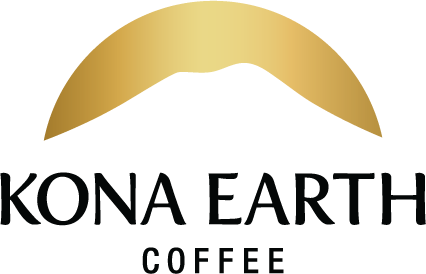Kona coffee has a history spanning more than 200 years. A delicious, Hawaiian specialty coffee known worldwide for its unique flavor profile, it is only grown on the tropical slopes of the Hualalai volcano on Hawaii's Big Island. This Kona coffee belt comprised a relatively tiny coffee-growing region of just three miles wide and about 30 miles long. Here, Kona coffee growers benefit from Goldilocks growing conditions with rich, volcanic soil and a temperature climate in which Kona Typica trees thrive.
As the global demand for this rare Hawaiian specialty coffee has grown, so has the rise of Kona coffee counterfeiters. Hiding behind words like "Kona blend" or "Kona roasted”, these lesser-quality coffees seek to capitalize on the sterling reputation that true, 100% Kona coffee has rightfully earned.
Sadly, consumers and Kona coffee growers are left holding the proverbial coffee bag, with a cascading effect that harms the economic viability of this gourmet specialty coffee. How? Consumers are duped into overpaying for inferior Kona blend products. Disappointed, they dismiss the value of Kona coffee and move on to search for something better. Worse, Kona coffee growers lose the value of their hard-won reputation as a high-quality gourmet coffee. Here's why it matters.
Kona Coffee Growers are Harmed
The production process for true 100% Kona coffee beans is rigorous. Tremendous cost and effort go into growing this renowned Hawaiian specialty coffee. Growers bear the costs for farm management, requiring expensive materials, labor, fuel, and equipment.
During harvest season, the coffee cherry fruit of the trees is hand-picked by fair-wage pickers, often earning $200 - $300 a day. Picking is done at peak ripeness, over five or six rounds during the season.
Then, the cherry is processed, involving numerous steps; pulping, drying, dry milling, climate & storing the green coffee in storage areas that are temperature and humidity-controlled.
Finally, roasting is done to bring out the unique characteristics of the Kona coffee bean, once again requiring time, effort, labor, and machine costs.
Even before selling the coffee, Kona coffee growers bear all these costs as they prepare a premium product for their customers, one prized globally by coffee connoisseurs. Add to this their costs for marketing and advertising, packaging, & shipping and it’s easy to understand Kona coffee’s hefty $40 - $50 retail price per pound.
In contrast, Kona blends often contain a mere 10% of Kona coffee beans, with the remaining beans coming from cheaper growing regions as filler. The result is a product that is not only low-quality but also misleads consumers, many of whom are looking for authentic Kona coffee. Even worse, it cheapens the value of true, 100% Kona coffee, harming the Kona coffee growers who go to such pains to produce the real thing.
What Can Be Done?
Kona coffee growers need Hawaii state legislators to step up and protect this special product with origin protection. This is nothing new. Idaho protects Idaho-grown potatoes, Vermont requires 100% for Vermont maple syrup. Without enjoying protected status, the Kona coffee growers are harmed financially and reputationally.
Courts agree. In a recent Kona Coffee Labeling Lawsuit, farmers were awarded millions of dollars in settlement monies from large retailers that knowingly sold inferior products claiming to be Kona coffee to consumers.
A bill making its way through the Hawaii legislature last year, HB1517 , fell far short of delivering real protection for Kona coffee farmers. Instead of requiring greater percentages of Kona coffee beans to claim that the name Kona coffee, it improved labeling laws – supposedly to protect consumers from being duped into buying inferior products.
Can blend producers still sell Kona coffee consisting of only 10% of Kona beans? Yes. As is often the case when deep pocket economic interests are at play, the can was kicked down the road with an economic impact study, being conducted now:
The Department of Agriculture shall conduct an independent economic study over the next 18 months at a cost of $100,000 to determine the impacts of a change to a minimum coffee blend ratio of fifty-one per cent and one hundred per cent.
Consumers Have a Voice:
As Kona coffee growers fight for justice in the Hawaii legislature, it is essential for consumers to be educated in these misleading methods used by Kona blend producers. They can also add their voice to the discussion.
According to a recent missive from the Kona Coffee Farmers Association: "the general public is invited to participate in an exercise to gauge broad perceptions of potential impact of various labeling scenarios. Those interested in providing their views on potential scenario outcomes, can share their perspective by completing the exercise at www.surveymonkey.com/r/kona-predict through December 15th."
The consequences of Kona blend products on true 100% Kona coffee growers is significant. While Kona blends achieve high prices for what is typically low-quality coffee, Kona coffee farmers and consumers pay the price.


